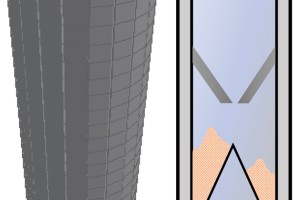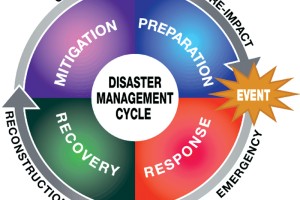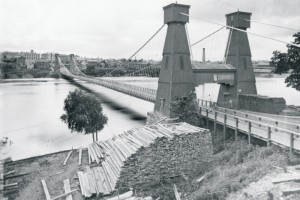Reinforced concrete is a construction material widely used in many applications, including buildings, bridges, and other infrastructures. Due to its massive size and various redundancies, concrete structures are often considered solid, robust, and safe. However, there have been instances of concrete structure failures and collapses, many due to erroneous assumptions or oversight by the designers in evaluating the design situation or poor construction practices. This article highlights several design and construction situations that designers and builders should pay special attention to in order to prevent failures.
…Yearly Archives : 2022
Part 2: Performance Metrics to Measure Recovery
The NCSEA Resilience Committee is committed to educating the structural engineering community about the ever-evolving concepts of resilience and functional recovery. Adapt and Transform: COVID-19 Lessons for a More Resilient Future ran in STRUCTURE in October 2021. That article explored the concept of adaptability to the FEMA four-phase disaster management cycle characterized by “prepare, respond, recover, mitigate” (Figure 1) and considering the challenges and disruptions of the pre-vaccine COVID-19 pandemic.
…Continuing our series on automation – December 2021 (Installment 1), March 2022 (2), June 2022 (3) – I sat down (virtually) in April 2022 with two more industry experts in digital design: Steve Reichwein, a Senior Associate at Severud Associates Consulting Engineers, and Carlos de Oliveira, a founder of Cast Connex. Below are highlights from our discussion.
…What are Expectations for New Hires Entering the Workforce?
Structural engineering firms have a vested interest in selecting new hires with the skills to flourish in an office environment and an education that prepares them to solve the myriad of technical challenges that structural engineers encounter daily. Additionally, students who obtain an accredited degree from a civil/structural/architectural engineering program are interested in obtaining a job that applies their education and helps them advance their careers.
…19th Century Mississippi River Bridges Series
The Mississippi was the last major river to be crossed as the nation moved to the west. From its headwaters in Lake Itasca in Northern Minnesota to its discharge into the Gulf of Mexico, the river, with its tributaries, drained the entire United States between the Appalachians and the Rocky Mountains. It had a watershed of 1,245,000 square miles or approximately 40% of the country’s total land mass. It formed the boundary of ten states; Minnesota, Wisconsin, Iowa, Illinois, Missouri, Kentucky, Tennessee, Arkansas, Louisiana, and Mississippi. With the advent of the steamboat, it became a major shipping lane, and shippers wanted free navigation of the river without bridge piers.
…Structural engineers charged with designing a structure depend upon the input of geotechnical engineers to determine the appropriate foundation type for a particular site and building design. Although both are critical team members on a project, the geotechnical engineer and structural engineer may be engaged through different processes, and each may have different clients though parallel responsibilities.
…The following is a developer’s view of today’s built environment as a result of COVID and work-from-home restrictions. STRUCTURE believes it is important to visualize how these factors can influence the field we work in. This regional example is reflective of many areas around the U.S.
…Meet the Future of Structural Engineering!
The NCSEA Foundation Diversity in Structural Engineering Scholarship Program was established in 2020 to award funding to students who have been traditionally underrepresented in the profession. This year, the program received more than 50 scholarship applications from across the country.
…Fifteen students from the SEI Grad Student Chapter, University of Texas, Arlington, participated in an externship event on May 19 at the IEA Dallas Headquarters for an office tour, networking, and job-seeking tips with practice professionals and HR, meetings to review ongoing projects and workplace dynamics, and learning field-required software.
…November 1, 2022, Chicago, IL
Are you positioned to succeed in a highly competitive profession? You know how to design and understand the code, but do you understand the business implications of your daily activities? NCSEA and CASE have teamed up to better equip the structural engineering leaders of today and tomorrow with tools they can use to excel at the business side of structural engineering.
…









